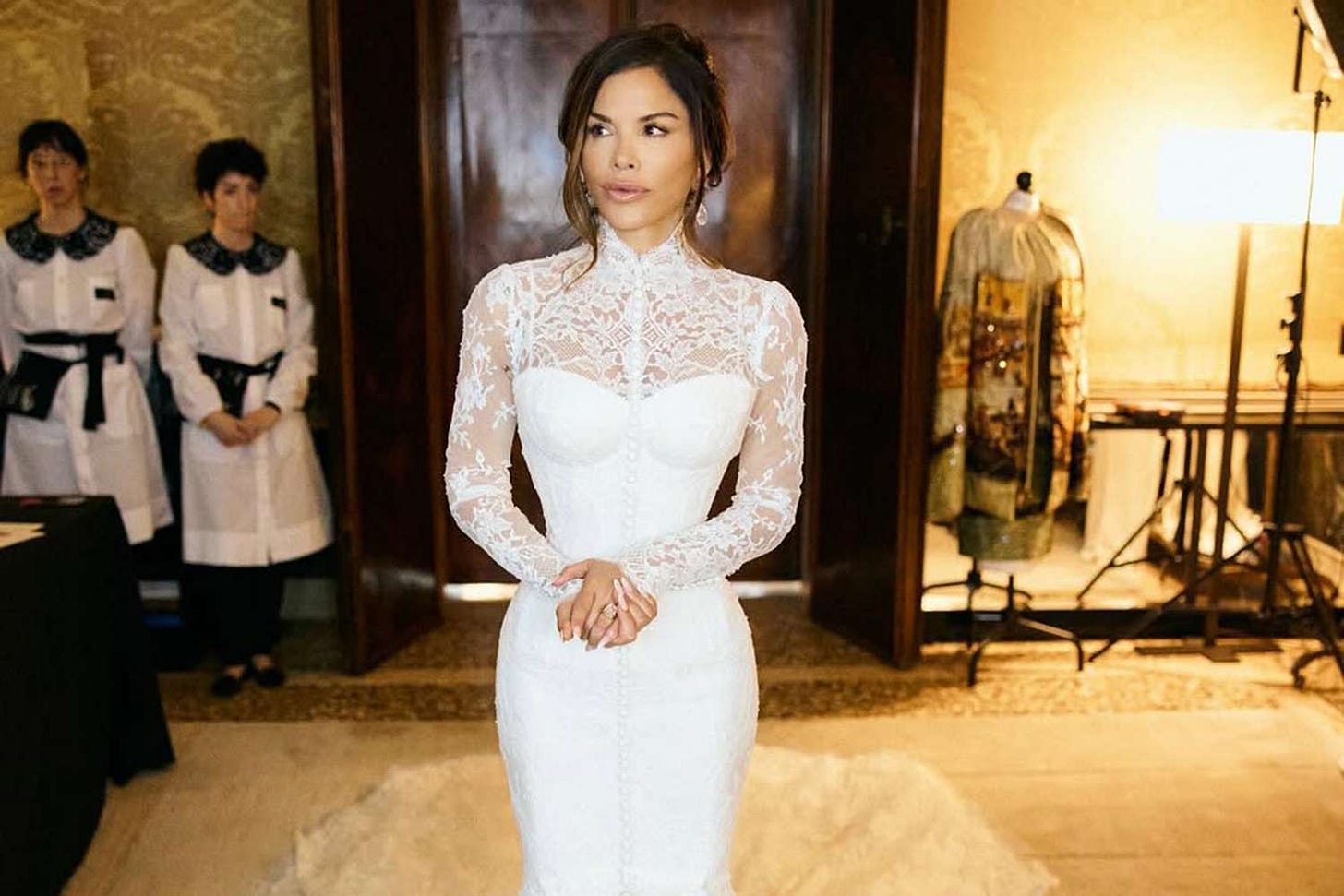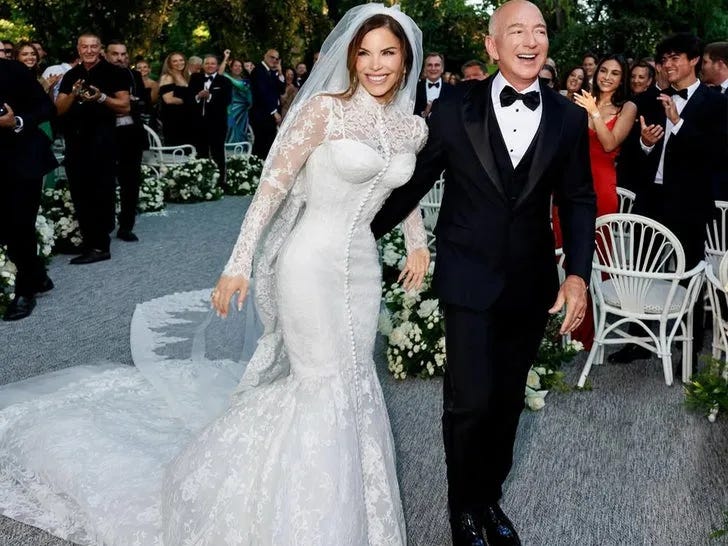Anna Wintour is Fashion's Ruth Bader Ginsberg and Other Stories
Prompt No. 58: That Venice Wedding, That Departure, and That Princess Treatment

Last Friday, Lauren Sánchez married billionaire Jeff Bezos on the island of San Giorgio Maggiore standing on what some say resembled an Amazon Basics carpet. Fashion’s favorite bigoted duo Dolce & Gabbana recreated Sophia Loren’s wedding dress from the movie Houseboat for the bride, and, of course, Vogue covered it. Guests included Oprah Winfrey, Leonardo Di Caprio, and curiously Sydney Sweeney. Nothing was at all out of the ordinary for such an opulent affair, but it seemed the majority of onlookers disagreed. Many concluded that Sánchez has no taste. Specifically, people seem to think she looked cheap. I found the discourse pointless. To be clear, I am not defending billionaires – I do not believe they should exist – but I do think we, the huddled masses, should understand something about modern society. Like fashion, taste is now for the poor.
That was not always the case. In the mid- to late 19th century, descendents of the early Dutch settlers loved to employ taste to maintain their status as America’s aristocracy. Anyone watching The Gilded Age will tell you it is all they had. Through their rigid and effortful upbringing, the old money elite fostered a way of life that largely kept out the new industrial wealth emerging from the Midwest. As the country grew, and more White Americans became rich, taste became the standard by which the “aristocracy” not only recognized their own, but granted access to newly affluent outsiders – at least that is how the story goes. New York newspapers and magazines, including Vogue, reported on styles that seemed to garner favor with High Society’s powerful, broadcasting to readers the notion that the deft and discrete performance of taste was essential to upward mobility.
However, that tactic fell away as the very clan that popularized it, Northern White, Anglo-Saxon Protestants, lost their grip on the nation’s economic, social, and cultural capital in the 1970s. Although heavily promoted throughout popular culture in the 1980s, no one seemed to really pick up on the fact that the nation’s aristocracy died off. Increased global interactions due to advances in communication and technology meant wealth was not necessarily amassed or maintained through familial relationships, but multinational corporations and conglomerates. With so much wealth in circulation, that narrow and nebulous notion of taste became irrelevant and bad for business. Anyway, it was too late. The concept of taste had already taken hold, and like anything else inherited from the elite, their brands, styles, and even daily routines, we held it in esteem.
Keep reading with a 7-day free trial
Subscribe to A Sunday Journal to keep reading this post and get 7 days of free access to the full post archives.



